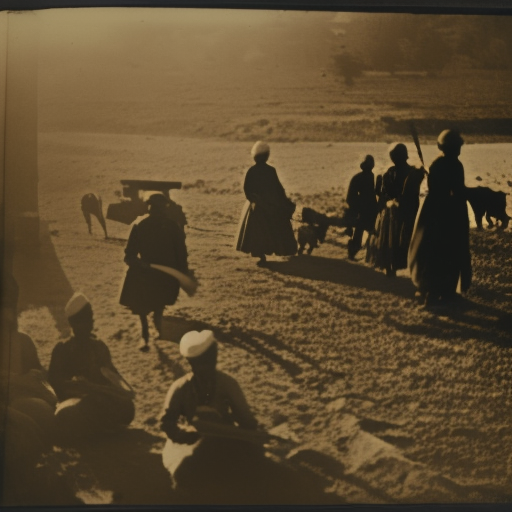Summary:
The Indian Rebellion of 1857, also known as the Sepoy Mutiny or the First War of Independence, was a major uprising against British rule in India. It began in May 1857 and lasted for about a year, with widespread violence and rebellion across various parts of the country. The rebellion was sparked by a number of factors, including religious tensions, economic grievances, and resentment towards British policies.
Causes of the Rebellion:
The causes of the Indian Rebellion of 1857 were multifaceted. One of the main triggers was the introduction of the new Enfield rifle, which required sepoys (Indian soldiers) to bite off the ends of greased cartridges. Rumors spread that the grease used was made from cow and pig fat, which offended both Hindu and Muslim soldiers. This led to widespread discontent and protests.
Religious tensions were also a significant factor. The British East India Company’s policies, such as the annexation of Indian states and the introduction of Western education, were seen as a threat to traditional Indian society and religion. The introduction of Christianity and attempts to convert Indians further fueled religious tensions.
Economic grievances played a role as well. The British had implemented various policies that harmed the Indian economy, such as high taxation, land confiscation, and the destruction of traditional industries. The introduction of British-made goods also led to the decline of Indian industries, causing widespread unemployment and poverty.
Course of the Rebellion:
The rebellion began in Meerut when Indian soldiers refused to use the new cartridges and were subsequently court-martialed. This sparked a mutiny, and the soldiers marched to Delhi, where they declared Bahadur Shah II, the last Mughal emperor, as their leader. The rebellion quickly spread to other parts of northern and central India, with both soldiers and civilians joining the uprising.
The rebels faced initial success, capturing several important cities and territories. However, they lacked coordination and a unified leadership, which ultimately weakened their cause. The British, on the other hand, quickly mobilized their forces and were able to regain control of key areas.
The rebellion witnessed brutal violence on both sides. Massacres and atrocities were committed by both the rebels and the British forces. The British responded with extreme force, crushing the rebellion with a combination of military might and political maneuvering.
Consequences:
The Indian Rebellion of 1857 had far-reaching consequences. In the short term, the rebellion was brutally suppressed by the British, resulting in the loss of thousands of lives. The rebels faced severe punishment, including execution and imprisonment.
The British government took direct control of India from the East India Company, leading to the establishment of the British Raj. The rebellion also led to significant changes in British policies towards India. The British became more cautious in their approach, adopting a policy of divide and rule and implementing reforms to address some of the grievances that had fueled the rebellion.
The rebellion also had a profound impact on Indian nationalism. It served as a wake-up call for many Indians, highlighting the need for unity and resistance against British rule. The rebellion laid the foundation for future movements and leaders who would fight for India’s independence.
In conclusion, the Indian Rebellion of 1857 was a significant event in India’s struggle for independence. It was driven by a combination of religious, economic, and political factors. Although the rebellion was ultimately suppressed, it had a lasting impact on Indian society and played a crucial role in shaping the path towards independence.












